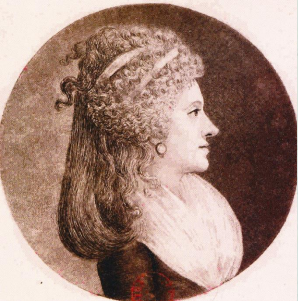Related Research Articles

Robert Richardson Sears was an American psychologist who specialized in child psychology and the psychology of personality. He was the head of the psychology department at Stanford and later dean of the School of Humanities and Sciences there, continued the long-term I.Q. studies of Lewis Madison Terman at Stanford, and authored many pivotal papers and books on various aspects of psychology.

Franziska Tiburtius was a German physician and advocate for women's education.

Marie-Jeanne-Amélie Le Francais de Lalande, born Marie-Jeanne Harlay, was a French astronomer and mathematician.

Marilyn Bailey Ogilvie is an American historian of science known especially for her work on the history of women in science. She taught at Oklahoma Baptist University before becoming curator of the History of Science Collections and professor at the University of Oklahoma. She is currently Curator Emeritus, History of Science Collections and Professor Emeritus, Department of the History of Science at the university.

Sir Charles Flower, 1st Baronet (1763–1834) was a merchant who served as Lord Mayor of London in 1808. Flower traded in salt meat, butter and cheese, and was described as having acquired "an ample fortune" by the time of his ascendency to the mayoralty. He was created a baronet, of the Flower baronets, of Lobb in the County of Oxford and of Woodford in the County of Essex, on 1 December 1809.
Ruth May Strang was an American psychologist whose primary research interests were in child and adolescent psychology.
Mathilde Margarethe Lange was an American biologist known for her research in experimental embryology. She was born in New York City and her father was a physician and surgeon. She attended the University of Zurich and earned her Ph.D. in 1920. She was employed by the United States Department of Agriculture for the first year following her Ph.D. as a researcher. Lange then moved to Wheaton College, Massachusetts as a professor of zoology, where she remained until her retirement in 1950. Her professional memberships included the New York Academy of Growth and the Genetic Association.
Emma Eliza Laughlin (1866-1962) was an American librarian, amateur botanist and educator known for her research on mustard plants and her vast herbarium. Though she had no formal botany education and worked as a high school teacher, she published extensively on the flora of Ohio, particularly rare plants, and founded the Barnesville, Ohio public library. She contributed her herbarium to Ohio State University.
Nataliia Ivanova Lebedeva was a Russian ethnographer and anthropologist known for her studies of textiles in Russia, Ukraine, and Belarus. She was born and died in Ryazan. She was a pioneer in the study of material culture to show evidence of a people's development and history. She studied the weaving, spinning, typology, and buildings of Eastern Slavic peoples.
Ellen Balaam (1891–1985) was an Australian physician and the first woman surgeon in Melbourne.
Alice Emily Smith was a British chemist and one of the nineteen signatories of the 1904 petition to the Chemical Society.

Milda Dorethea Prytz (1891-1977) was a Norwegian chemist.
Mary Alice Eleanor Richards (1885–1977) was a British botanist.

Marie Krogh, née Jørgensen, was a Danish physician, physiologist and nutritionist.
Ethel de Fraine was a British botanist.
Mary Violette Dover was a Canadian chemist.
Valentina Gorinevskaya, was a Russian military surgeon and trauma specialist.
Eva M. Reed was an American botanist.
Lucie Blanquies was a woman scientist who worked in Madame Curie's laboratory in Paris from 1908 to 1910. She measured the power of the alpha particles emitted by different radioactive materials.
Joy Dorothy Harvey is an American historian of science.
References
- ↑ Joy Harvey and Marilyn Ogilvie (1 January 2000). Sears, Pauline Snedden (1908-1993). The Biographical Dictionary of Women in Science. Vol. 2. Marilyn Ogilvie and Joy Harvey (editors). New York and London: Routledge. p. 1171. ISBN 978-0-415-92040-7.